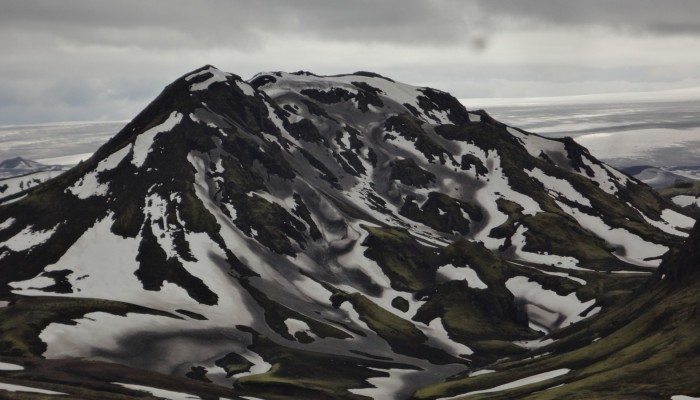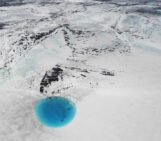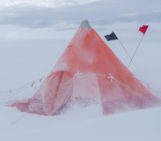
Featuring today on the blog is the land of ice and fire: Iceland. That title was never better suited to (and exemplified), than it is in this photograph taken by Daniel Garcia Castellanos in June 2013. Snow capped peaks are also sprinkled by a light dusting of volcanic ash. Dive into this post to find out the source of the ash and more detail about the striking peak.
The picture is dominated by a snowed mountain in Southern Iceland, captured in June 2013, three years after the Eyjafjallajökull eruption. When Eyjafjallajokull erupted, it sent ash kilometers high into the atmosphere disrupting the air traffic in most Europe for weeks.
“This striking Icelandic landscape also inspired Tolkien’s fantasy in The Lord of the Rings,” explains Daniel, a researcher at the Instituto de Ciencias de la Tierra Jaume Almera, in Barcelona.
Eyjafjallajokull is located in the Eastern Volcanic Zone in southern Iceland and the area photographed is among the youngest (less than 0.7 yr in age) and most active areas of Iceland, right on the contact where the Eurasian and the North American tectonic plates meet.The black rock seen in the image is tephra – fragments of rock that are produced when magma or or rock is explosively ejected (USGS) – from the neighboring Torfajökull rhyolitic stratovolcanic system, know for its cone shaped volcanoes built from layer upon layer of lava rich in silica and consequently very viscous. The light-green colour consists of the ubiquitous Icelandic moss.
In the image, the remnants of winter white snow are dotted with fine grey ashes from the Eyjafjallajökull 2010 eruption (about 30 km to the south of this image). Years after the Eyjafjallajökull eruption, the volcano still burns hot and its lighter ashes are still blown over southern Iceland providing this magical colors over the entire region.
Daniel’s adventures in Iceland didn’t stop at simply photographing stunning volcanic landscapes. He also had the privilege to see the inside of one of the volcanoes in the Eastern Volcanic Zone close up. Watch his descent into the Thrihnukagigur volcanic conduit over on his blog, Retos Terrícolas.



